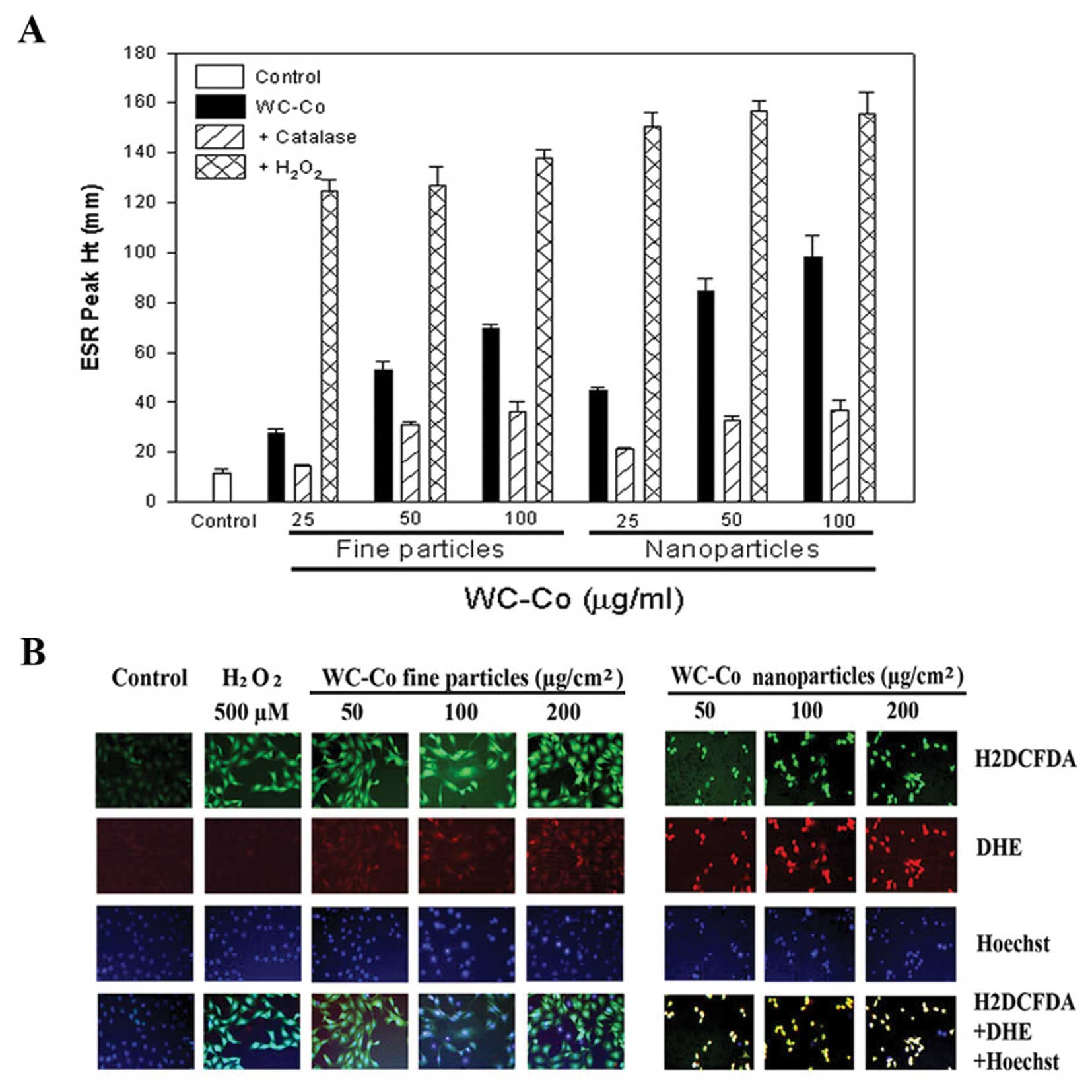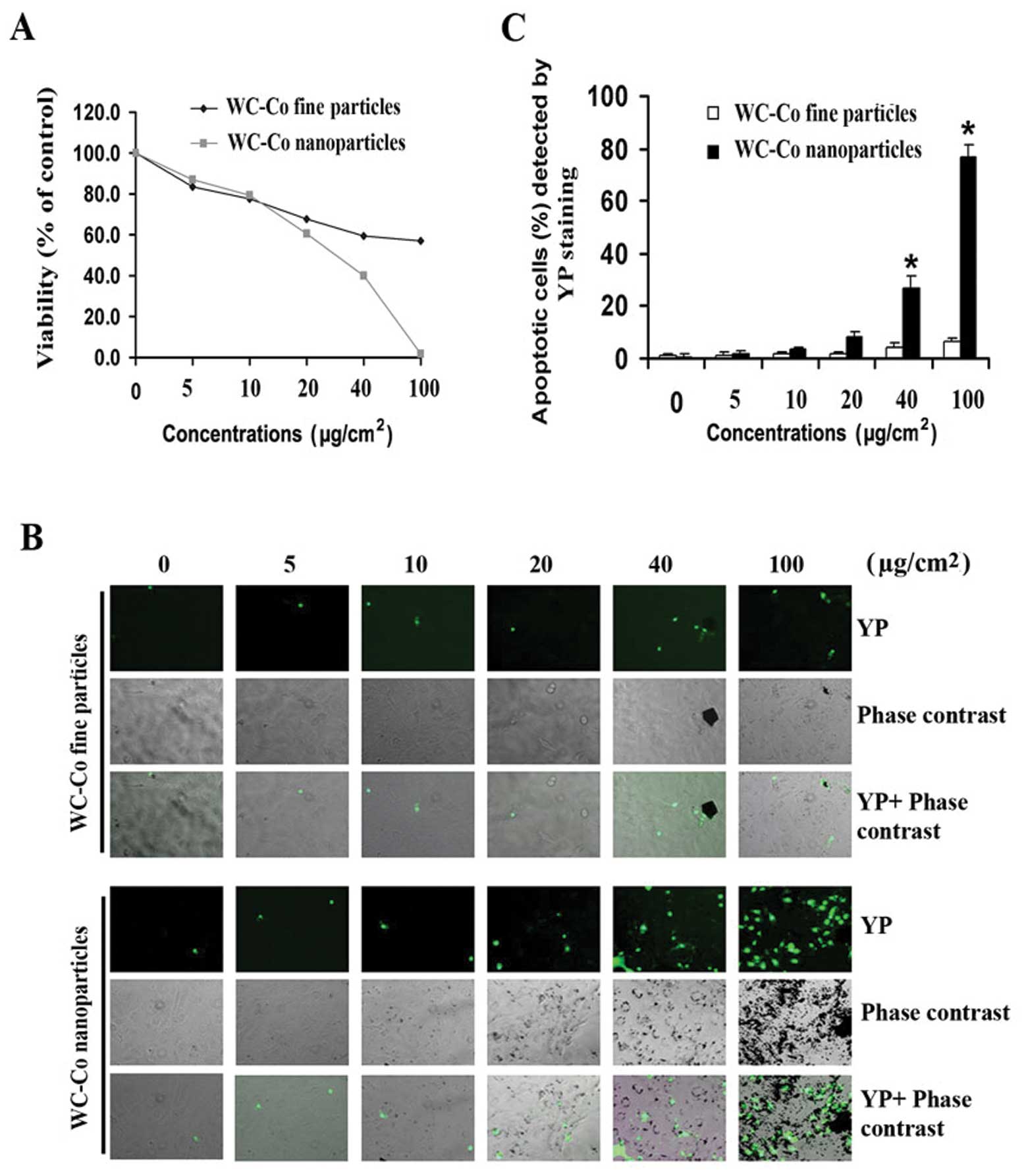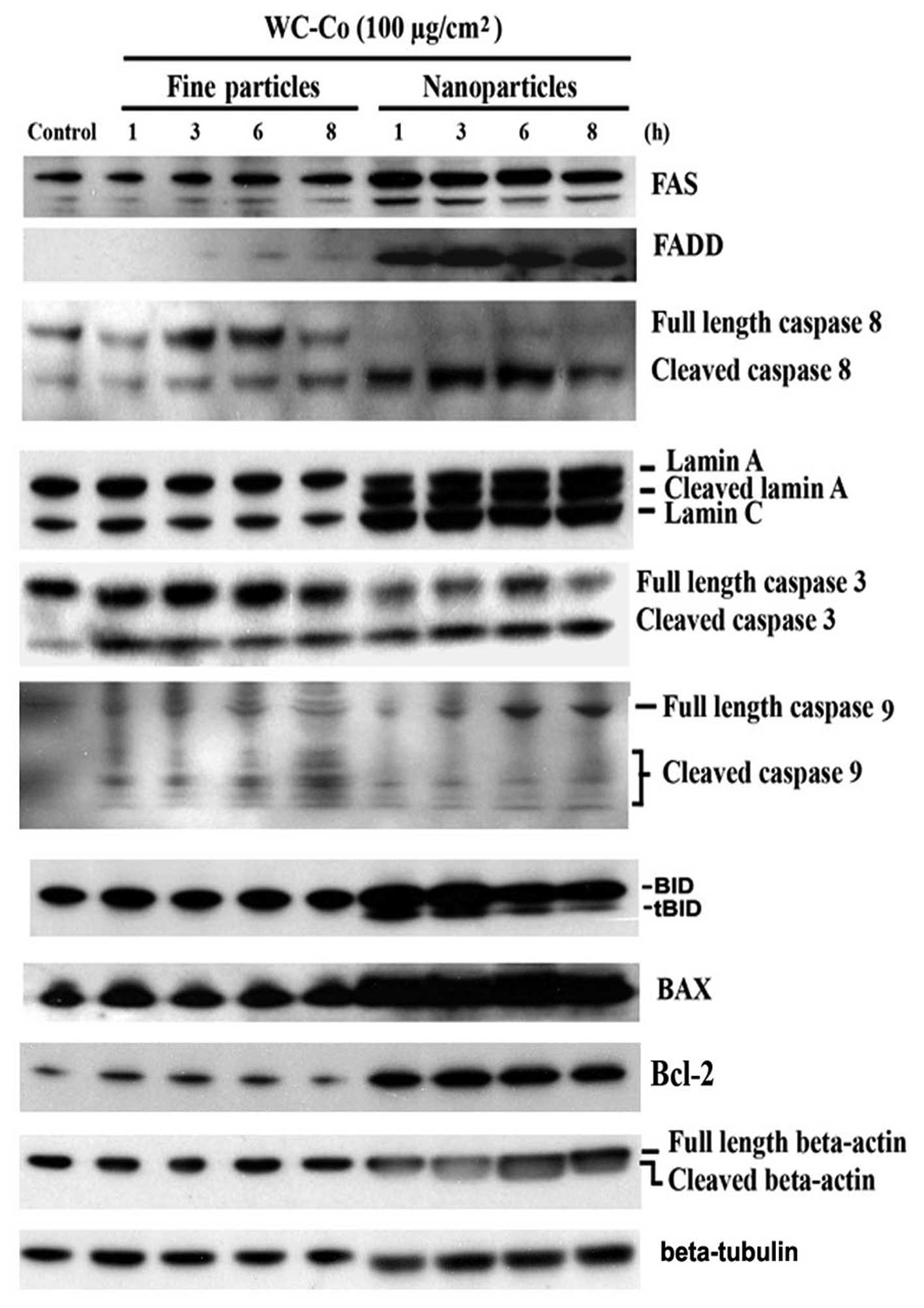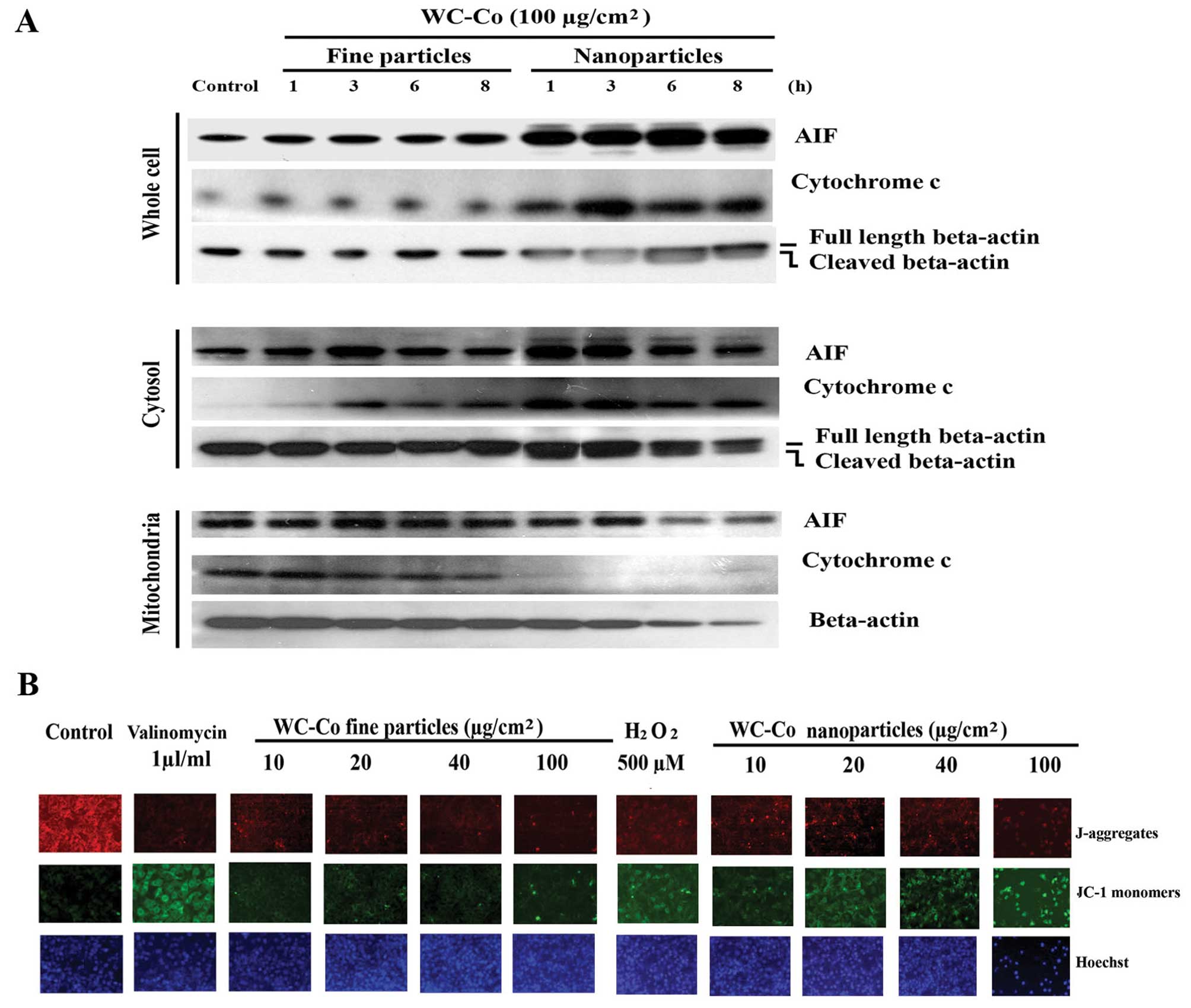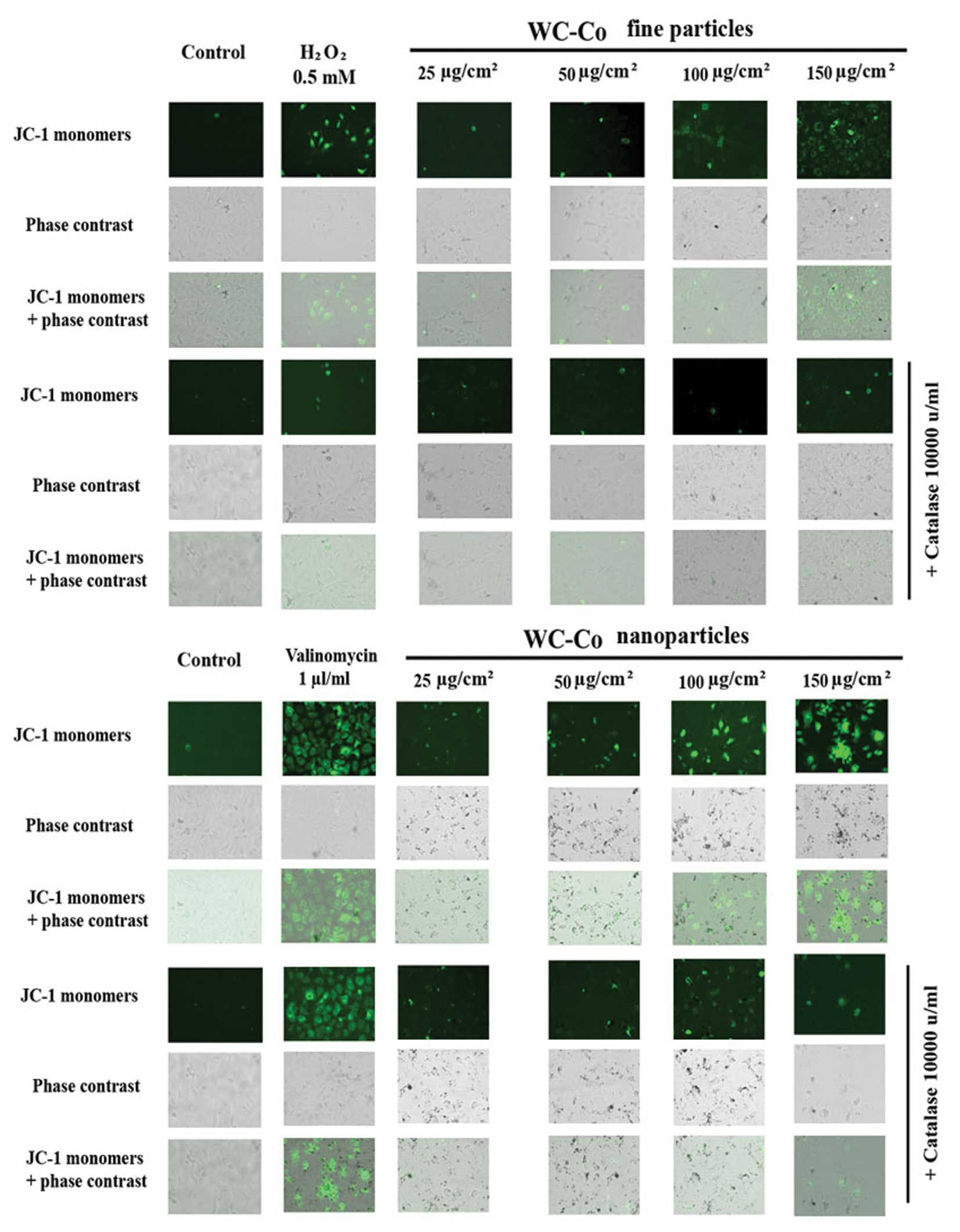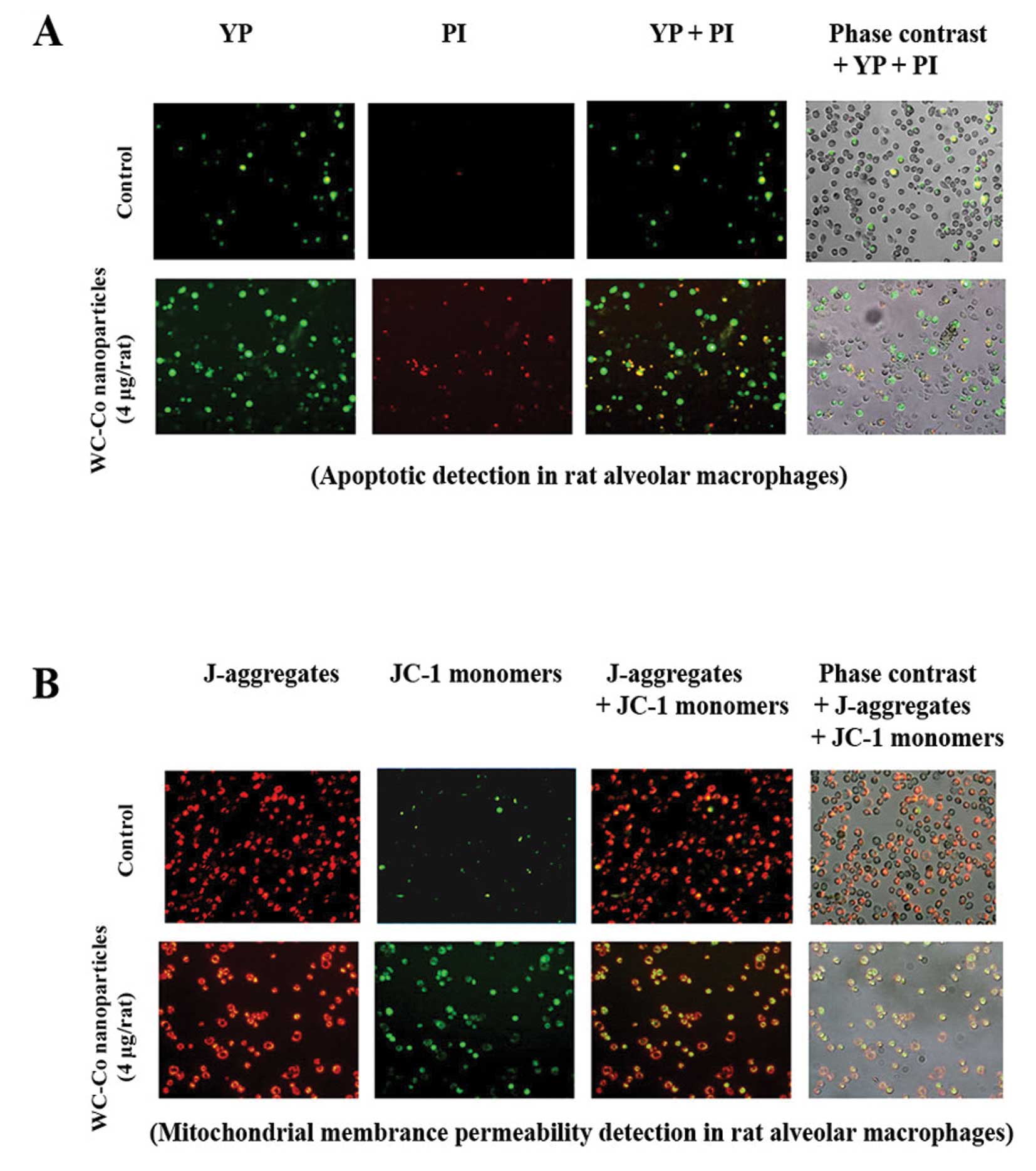|
1
|
Dagani R: Nanostructured materials promise
to advance range of technologies. Chem Engineer News. 23:18–24.
1992. View Article : Google Scholar
|
|
2
|
Lombaert N, Lison D, Van Hummelen P and
Kirsch-Volders M: In vitro expression of hard metal dust (WC-Co) -
responsive genes in human peripheral blood mononucleated cells.
Toxicol Appl Pharmacol. 227:299–312. 2008. View Article : Google Scholar : PubMed/NCBI
|
|
3
|
Driscoll KE, Maurer JK, Lindenschmidt RC,
Romberger D, Rennard SI and Crosby L: Respiratory tract responses
to dust: relationships between dust burden, lung injury, alveolar
macrophage fibronectin release, and the development of pulmonary
fibrosis. Toxicol Appl Pharmacol. 106:88–101. 1990. View Article : Google Scholar
|
|
4
|
Oberdorster G, Ferin J and Lehnert BE:
Correlation between particle size, in vivo particle persistence,
and lung injury. Environ Health Perspect. 102(Suppl 5): 173–179.
1994. View Article : Google Scholar : PubMed/NCBI
|
|
5
|
Oberdorster G: Pulmonary effects of
inhaled ultrafine particles. Int Arch Occup Environ Health. 74:1–8.
2001. View Article : Google Scholar : PubMed/NCBI
|
|
6
|
Zhao J, Bowman L, Zhang X, et al: Titanium
dioxide (TiO2) nanoparticles induce JB6 cell apoptosis through
activation of the caspase-8/Bid and mitochondrial pathways. J
Toxicol Environ Health A. 72:1141–1149. 2009. View Article : Google Scholar : PubMed/NCBI
|
|
7
|
Zhao J, Bowman L, Zhang X, et al: Metallic
nickel nano- and fine particles induce JB6 cell apoptosis through a
caspase-8/AIF mediated cytochrome c-independent pathway. J
Nanobiotechnol. 7:22009. View Article : Google Scholar : PubMed/NCBI
|
|
8
|
Pulido MD and Parrish AR: Metal-induced
apoptosis: mechanisms. Mutat Res. 533:227–241. 2003. View Article : Google Scholar : PubMed/NCBI
|
|
9
|
Lombaert N, De Boeck M, Decordier I,
Cundari E, Lison D and Kirsch-Volders M: Evaluation of the
apoptogenic potential of hard metal dust (WC-Co), tungsten carbide
and metallic cobalt. Toxicol Lett. 154:23–34. 2004. View Article : Google Scholar : PubMed/NCBI
|
|
10
|
Raff MC: Social controls on cell survival
and cell death. Nature. 356:397–400. 1992. View Article : Google Scholar : PubMed/NCBI
|
|
11
|
Steller H: Mechanisms and genes of
cellular suicide. Science. 267:1445–1449. 1995. View Article : Google Scholar : PubMed/NCBI
|
|
12
|
White E: Life, death, and the pursuit of
apoptosis. Genes Dev. 10:1–15. 1996. View Article : Google Scholar : PubMed/NCBI
|
|
13
|
Wyllie AH, Kerr JF and Currie AR: Cell
death: the significance of apoptosis. Int Rev Cytol. 68:251–306.
1980. View Article : Google Scholar
|
|
14
|
Lu X, Lee M, Tran T and Block T: High
level expression of apoptosis inhibitor in hepatoma cell line
expressing Hepatitis B virus. Int J Med Sci. 2:30–35. 2005.
View Article : Google Scholar : PubMed/NCBI
|
|
15
|
Ramp U, Krieg T, Caliskan E, et al: XIAP
expression is an independent prognostic marker in clear-cell renal
carcinomas. Hum Pathol. 35:1022–1028. 2004. View Article : Google Scholar : PubMed/NCBI
|
|
16
|
Kuwano K, Miyazaki H, Hagimoto N, et al:
The involvement of Fas-Fas ligand pathway in fibrosing lung
diseases. Am J Respir Cell Mol Biol. 20:53–60. 1999. View Article : Google Scholar : PubMed/NCBI
|
|
17
|
Bardales RH, Xie SS, Schaefer RF and Hsu
SM: Apoptosis is a major pathway responsible for the resolution of
type II pneumocytes in acute lung injury. Am J Pathol. 149:845–852.
1996.PubMed/NCBI
|
|
18
|
Levine AJ: p53, the cellular gatekeeper
for growth and division. Cell. 88:323–331. 1997. View Article : Google Scholar : PubMed/NCBI
|
|
19
|
Matute-Bello G, Winn RK, Jonas M, Chi EY,
Martin TR and Liles WC: Fas (CD95) induces alveolar epithelial cell
apoptosis in vivo: implications for acute pulmonary inflammation.
Am J Pathol. 158:153–161. 2001. View Article : Google Scholar : PubMed/NCBI
|
|
20
|
McCabe MJ Jr: Mechanisms and consequences
of silica-induced apoptosis. Toxicol Sci. 76:1–2. 2003. View Article : Google Scholar : PubMed/NCBI
|
|
21
|
Gawlitta D, Oomens CW, Baaijens FP and
Bouten CV: Evaluation of a continuous quantification method of
apoptosis and necrosis in tissue cultures. Cytotechnology.
46:139–150. 2004. View Article : Google Scholar : PubMed/NCBI
|
|
22
|
Boffa DJ, Waka J, Thomas D, et al:
Measurement of apoptosis of intact human islets by confocal optical
sectioning and stereologic analysis of YO-PRO-1-stained islets.
Transplantation. 79:842–845. 2005. View Article : Google Scholar : PubMed/NCBI
|
|
23
|
Ding M, Kisin ER, Zhao J, et al:
Size-dependent effects of tungsten carbide-cobalt particles on
oxygen radical production and activation of cell signaling pathways
in murine epidermal cells. Toxicol Appl Pharmacol. 241:260–268.
2009. View Article : Google Scholar : PubMed/NCBI
|
|
24
|
Grossmann J, Mohr S, Lapentina EG, Fiocchi
C and Levine AD: Sequential and rapid activation of select caspases
during apoptosis of normal intestinal epithelial cells. Am J
Physiol. 274:G1117–G1124. 1998.PubMed/NCBI
|
|
25
|
Okinaga T, Kasai H, Tsujisawa T and
Nishihara T: Role of caspases in cleavage of lamin A/C and PARP
during apoptosis in macrophages infected with a periodontopathic
bacterium. J Med Microbiol. 56:1399–1404. 2007. View Article : Google Scholar : PubMed/NCBI
|
|
26
|
Mashima T, Naito M and Tsuruo T:
Caspase-mediated cleavage of cytoskeletal actin plays a positive
role in the process of morphological apoptosis. Oncogene.
18:2423–2430. 1999. View Article : Google Scholar : PubMed/NCBI
|
|
27
|
Caroppi P, Sinibaldi F, Fiorucci L and
Santucci R: Apoptosis and human diseases: mitochondrion damage and
lethal role of released cytochrome C as proapoptotic protein. Curr
Med Chem. 16:4058–4065. 2009. View Article : Google Scholar : PubMed/NCBI
|
|
28
|
Susin SA, Lorenzo HK, Zamzami N, et al:
Molecular characterization of mitochondrial apoptosis-inducing
factor. Nature. 397:441–446. 1999. View
Article : Google Scholar : PubMed/NCBI
|
|
29
|
Susin SA, Daugas E, Ravagnan L, et al: Two
distinct pathways leading to nuclear apoptosis. J Exp Med.
192:571–580. 2000. View Article : Google Scholar : PubMed/NCBI
|
|
30
|
Piacenza L, Irigoin F, Alvarez MN, et al:
Mitochondrial super-oxide radicals mediate programmed cell death in
Trypanosoma cruzi: cytoprotective action of mitochondrial iron
superoxide dismutase overexpression. Biochem J. 403:323–334. 2007.
View Article : Google Scholar
|
|
31
|
Long TC, Tajuba J, Sama P, et al: Nanosize
titanium dioxide stimulates reactive oxygen species in brain
microglia and damages neurons in vitro. Environ Health Perspect.
115:1631–1637. 2007. View Article : Google Scholar : PubMed/NCBI
|
|
32
|
Lison D: Human toxicity of
cobalt-containing dust and experimental studies on the mechanism of
interstitial lung disease (hard metal disease). Crit Rev Toxicol.
26:585–616. 1996. View Article : Google Scholar : PubMed/NCBI
|
|
33
|
Kear BH, Skandan G and Sadangi RK: Factors
controlling decarburization in HVOF sprayed nano-WC/Co
hardcoatings. Scripta Materialia. 44:1703–1707. 2001. View Article : Google Scholar
|
|
34
|
Busch W, Kuhnel D, Schirmer K and Scholz
S: Tungsten carbide cobalt nanoparticles exert hypoxia-like effects
on the gene expression level in human keratinocytes. BMC Genomics.
11:652010. View Article : Google Scholar : PubMed/NCBI
|
|
35
|
IARC Working Group on the Evaluation of
Carcinogenic Risks to Humans: Cobalt in hard metals and cobalt
sulfate, gallium arsenide, indium phosphide and vanadium pentoxide.
IARC Monogr Eval Carcinog Risks Hum. 86:1–294. 2006.PubMed/NCBI
|
|
36
|
Helewski KJ, Kowalczyk-Ziomek GI and
Konecki J: Apoptosis and necrosis - two different ways leading to
the same target. Wiad Lek. 59:679–684. 2006.(In Polish).
|
|
37
|
Tozawa T, Kitamura H, Koshi K, Ikemi Y and
Ambe K: Experimental pneumoconiosis induced by cemented tungsten
and sequential concentrations of cobalt and tungsten in the lungs
of the rat. Sangyo Igaku. 23:216–226. 1981.(In Japanese).
|
|
38
|
Goldberg M, Harel A and Gruenbaum Y: The
nuclear lamina: molecular organization and interaction with
chromatin. Crit Rev Eukaryot Gene Expr. 9:285–293. 1999. View Article : Google Scholar : PubMed/NCBI
|
|
39
|
Broers JL, Bronnenberg NM, Kuijpers HJ,
Schutte B, Hutchison CJ and Ramaekers FC: Partial cleavage of
A-type lamins concurs with their total disintegration from the
nuclear lamina during apoptosis. Eur J Cell Biol. 81:677–691. 2002.
View Article : Google Scholar : PubMed/NCBI
|
|
40
|
Janmey PA: The cytoskeleton and cell
signaling: component localization and mechanical coupling. Physiol
Rev. 78:763–781. 1998.PubMed/NCBI
|
|
41
|
White SR, Williams P, Wojcik KR, et al:
Initiation of apoptosis by actin cytoskeletal derangement in human
airway epithelial cells. Am J Respir Cell Mol Biol. 24:282–294.
2001. View Article : Google Scholar : PubMed/NCBI
|
|
42
|
Gourlay CW and Ayscough KR: The actin
cytoskeleton: a key regulator of apoptosis and ageing? Nat Rev Mol
Cell Biol. 6:583–589. 2005. View Article : Google Scholar : PubMed/NCBI
|
|
43
|
Ly JD, Grubb DR and Lawen A: The
mitochondrial membrane potential (deltapsi(m)) in apoptosis; an
update. Apoptosis. 8:115–128. 2003. View Article : Google Scholar : PubMed/NCBI
|
|
44
|
Siskind LJ, Kolesnick RN and Colombini M:
Ceramide forms channels in mitochondrial outer membranes at
physiologically relevant concentrations. Mitochondrion. 6:118–125.
2006. View Article : Google Scholar : PubMed/NCBI
|
|
45
|
Landshamer S, Hoehn M, Barth N, et al:
Bid-induced release of AIF from mitochondria causes immediate
neuronal cell death. Cell Death Differ. 15:1553–1563. 2008.
View Article : Google Scholar : PubMed/NCBI
|
|
46
|
Garland JM and Rudin C: Cytochrome c
induces caspase-dependent apoptosis in intact hematopoietic cells
and overrides apoptosis suppression mediated by bcl-2, growth
factor signaling, MAP-kinase-kinase, and malignant change. Blood.
92:1235–1246. 1998.
|



